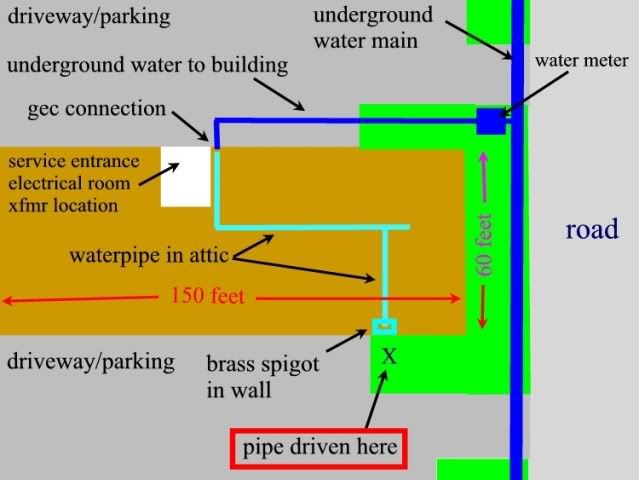crossman gary
Senior Member
Bob,
Houston is about 30 feet above sea level, right on the Gulf coast. We have high humidity and typically get a lot of rain which keeps soil conditions moist.
I have no idea of the chemistry of the "black gumbo clay" soil we have, but I have been aware of its conductive characteristics for some time. And, the wetter it is, the more conductive it is. I would bet that it has to do with the amount of minerals and salts in the soil which become ionized when dissolved in water.
Scientists say that this area was at one time completely under the ocean. I am sure this has something to do with our conductive soil. Calcium salts, other mineral salts, regular salt, all of this stuff ionizes when in water, and these ions help carry current.
Now, for the past 2 weeks, we have had a drought down here, so the soil has been pretty dry. Last night though, we finally got a pretty good rain, so the soil was moderately moist. This is what prompted me to do the test this morning rather than last week. I definitely chose conditions which were conducive to conductivity. If I did this test last week when it was very dry, I am certain the results would have been different. Also, the rigid pipe was brand new, meaning no rust or corrosion on the galvanized exterior. Right after I drove the pipe in, 3 feet deep, I took the ohm reading to the spigot. It read 2 ohms.
Like I mentioned before, this reading of 2 ohms from the pipe to the water spigot has a ton of parallel paths. It is going to the water main in the street which as I mentioned is miles and miles long underground. It is going to the water pipe coming into the building which is about 120 feet long and buried. It may be going to the 20,000 square foot slab and rebar system/building steel.
This is definitely NOT a test of ONLY the driven pipe like a three point ground test is done. I am not claiming it is.
Obviously all this could be faked in my pictures. I have no reason to do so.
I totally believe that other areas of the country have really poor conductive soils. I am certain that some places it would be difficult to get below 100 ohms. I believe what you guys are saying about other areas. But down here, this experiment isn't lying.
Hey, 2 weeks from now, maybe the conditions are completely different. Maybe it rains alot and even MORE current would flow. Maybe it doesn't rain, and the current is way less.
Right now, 50 volts pushed 6 amps through it.
Houston is about 30 feet above sea level, right on the Gulf coast. We have high humidity and typically get a lot of rain which keeps soil conditions moist.
I have no idea of the chemistry of the "black gumbo clay" soil we have, but I have been aware of its conductive characteristics for some time. And, the wetter it is, the more conductive it is. I would bet that it has to do with the amount of minerals and salts in the soil which become ionized when dissolved in water.
Scientists say that this area was at one time completely under the ocean. I am sure this has something to do with our conductive soil. Calcium salts, other mineral salts, regular salt, all of this stuff ionizes when in water, and these ions help carry current.
Now, for the past 2 weeks, we have had a drought down here, so the soil has been pretty dry. Last night though, we finally got a pretty good rain, so the soil was moderately moist. This is what prompted me to do the test this morning rather than last week. I definitely chose conditions which were conducive to conductivity. If I did this test last week when it was very dry, I am certain the results would have been different. Also, the rigid pipe was brand new, meaning no rust or corrosion on the galvanized exterior. Right after I drove the pipe in, 3 feet deep, I took the ohm reading to the spigot. It read 2 ohms.
Like I mentioned before, this reading of 2 ohms from the pipe to the water spigot has a ton of parallel paths. It is going to the water main in the street which as I mentioned is miles and miles long underground. It is going to the water pipe coming into the building which is about 120 feet long and buried. It may be going to the 20,000 square foot slab and rebar system/building steel.
This is definitely NOT a test of ONLY the driven pipe like a three point ground test is done. I am not claiming it is.
Obviously all this could be faked in my pictures. I have no reason to do so.
I totally believe that other areas of the country have really poor conductive soils. I am certain that some places it would be difficult to get below 100 ohms. I believe what you guys are saying about other areas. But down here, this experiment isn't lying.
Hey, 2 weeks from now, maybe the conditions are completely different. Maybe it rains alot and even MORE current would flow. Maybe it doesn't rain, and the current is way less.
Right now, 50 volts pushed 6 amps through it.

